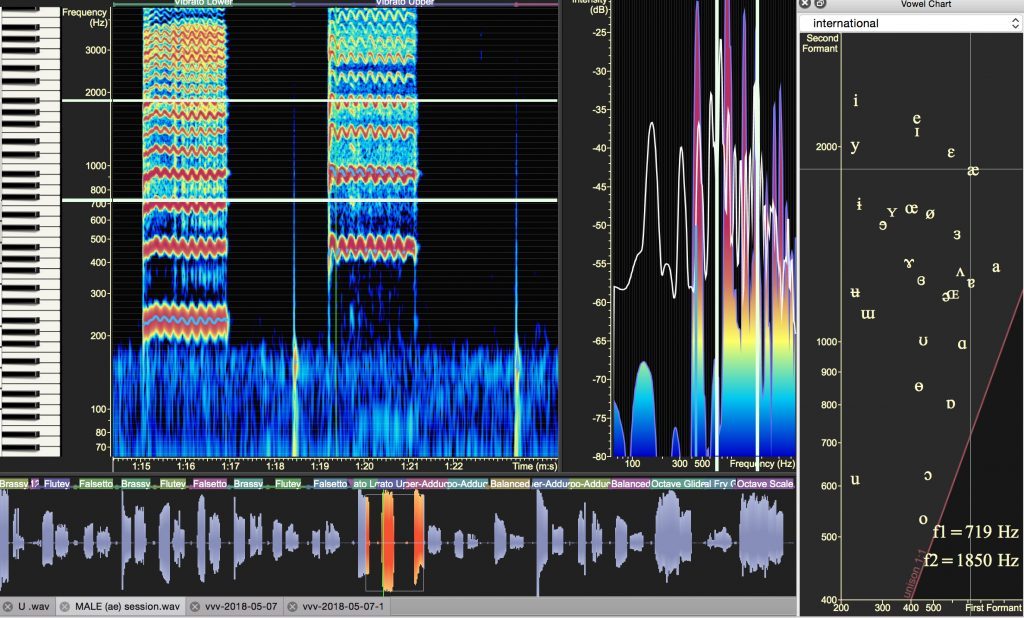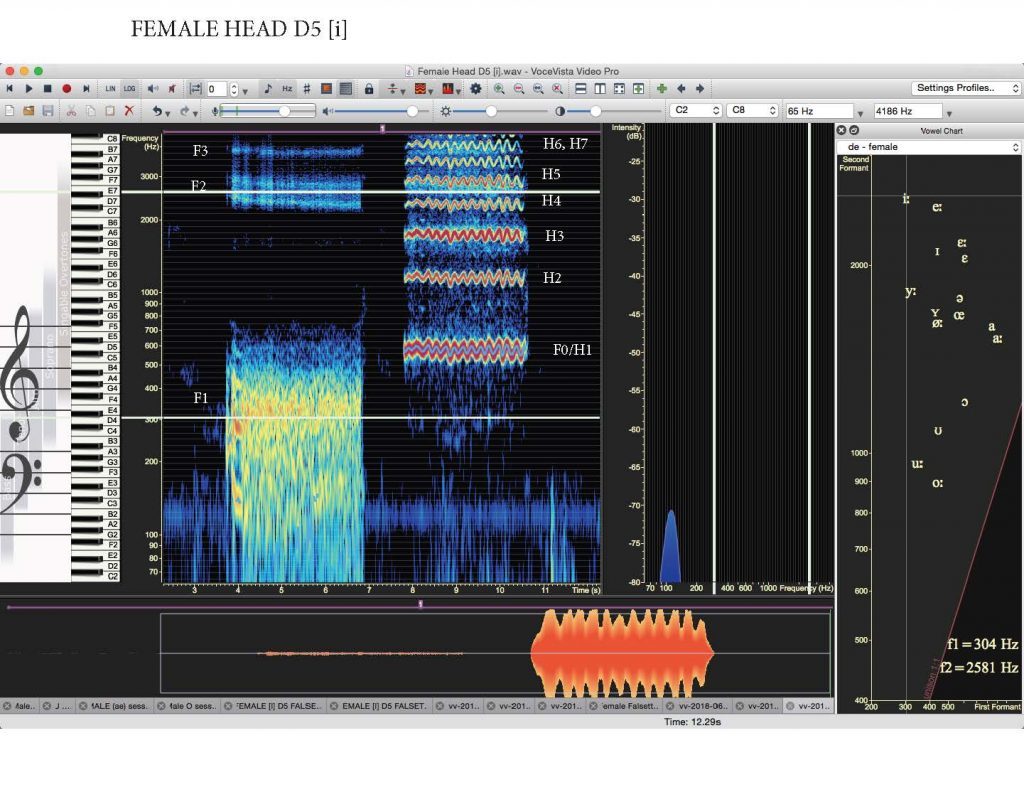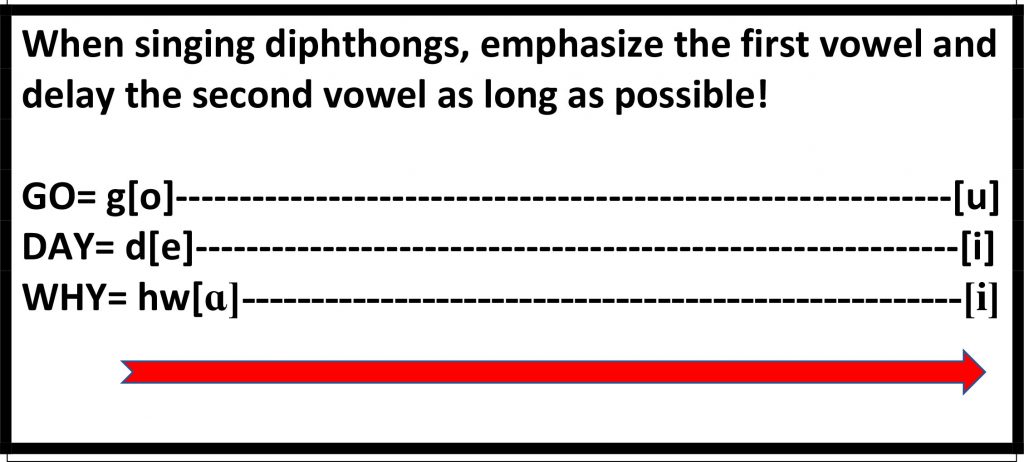How to Sing Better: Singing With Vibrato

The choice of when, where, and how much vibrato to use is yours.
You should be able to control your vibrato and use when you want it, eliminate it when you don’t, speed it up, and slow it down to create different effects.
For some styles, like rock, you may not want a vibrato.
In jazz and theatre, a delayed vibrato- singing a straight tone, then allowing it to release into vibrato, is used.
Create excitement at the end of a sustained phrase by speeding up the vibrato rate.
A slower pulse or diaphragmatic vibrato is used by some R&B singers. A lighter and faster pitch variation vibrato is used in many vocal styles. Classical and legit theatre singers use vibrato constantly.
To sound authentic in contrasting styles, singers must learn to control and vary vibrato styles.
The word vibrato comes from the Italian word vibrare– to vibrate. Vibrato originates in the brain and is initiated via the limbic system- the part of the brain that creates emotion. That’s why advanced singers automatically use vibrato on sustained pitches and emotional sections of a song.
Vibrato is an oscillation or slight variation of frequency (perceived as pitch) and/or amplitude. Frequency variations of a quarter step above the mean of the pitch and a quarter step below are pleasing to the ear. Wider variations exist in some styles.
Vibrato is characterized in terms of two factors: the amount of pitch variation and the speed at which the pitch is varied. A pleasing vibrato rate is between 5-6 cycles per second for most popular singing.
A vibrato rate faster than 8 pulses per second produces the unpleasant bleating sound of the tremolo. The goat type vibrato, caprino vibrato (Italian) or chevre (French) is created with the vocal folds.
A vibrato rate slower than 4 pulses per second produces a wobble, which sounds like inconsistent pitch. Occasionally, pop singers fall outside the norm; pitch variation can range from minimal to fairly wide in some R & B singers like Aaron Neville.
The amount of pitch variation is ideally a quarter-step above the mean and a quarter-step below the mean of the pitch. Fluctuations of up to a half-step above and below the mean occur in some singers.

MALE VIBRATO LOWER AND UPPER REGISTERS
FEMALE VIBRATO

Vibrato is the evidence of efficient balance between the vibrating vocal folds and subglottal air pressure. It often manifests automatically in a balanced voice. Vibrato will tend to be absent when excessive muscular tension is present.
Vibrato should remain steady regardless of changes in intensity, dynamics, and pitch. Evidence of incorrect vibrato includes a shaking jaw, a pulsating tongue, and uneven modulation.
Some teachers believe vibrato does not need to be taught; however, vibrato can be taught and must be taught. Learning vibrato correctly is essential to help singers avoid bad vocal habits.
Singers often try to learn by imitation, developing incorrect habits as they do so. The teacher’s job (and the job of this course) is to create a condition of balance in the voice to encourage vibrato, as well as providing exercises to develop various types of vibrato for style purposes.
Even though vibrato exercises might seem manufactured or mechanical in the beginning, vibrato eventually becomes organic and automatic.
Singers should be able to execute various vibrato types or even eliminate vibrato, as per the requirements of musical style.
Vibrato for contemporary singers is usually very subtle, and in many cases is eliminated. The Beatles, for example, felt that the use of vibrato was anathema in pop and rock music.
The hammer vibrato is heard in flamenco singing, middle eastern vocal styles, and French cabaret singers like Edith Piaf. Madonna, Cher, and Belinda Carlisle of the Go-Go’s also sang with this vibrato type.
The laryngeal or throat vibrato is created by moving the larynx up and down. This is a stylistic device used by many blues singers, including Bonnie Raitt.
A faster version of this is used in jazz singing and sounds like a shake. It’s a very quick pitch oscillation achieved by laryngeal movement.
Vibrato rates can vary to match the rhythmic subdivisions of the music. Our final vibrato exercise in Step Seven develops your ability to not only speed vibrato rate up, but to change from duple to triplet to 16th note subdivisions.
Ultimately, the choice of vibrato is up to the artist.
In teaching vibrato, we seek to give you skills so you can make choices.
Vibrato is learned by imitation, whether conscious or unconscious. If vibrato manifestation is left up to fate, a singer is not aware of how to alter their vibrato for various styles of music.
In this section, we will be working on several variations of vibrato. The first is a more advanced version of the pulse vibrato that we first explored in Steps Two and Three.
We also work on two variations of pitch change or laryngeal vibrato- pitch change up and pitch change down. We also learn to use effects like straight tone into a delayed vibrato and increasing vibrato speed.
Pulse Vibrato: Generated by changes in amplitude; the oscillating effect is created with changes in volume rather than pitch. This kind of vibrato is also known as diaphragmatic vibrato, or abdominal vibrato.
Tiny outward pulses are felt near the solar plexus. It is used in musical theatre, R&B, pop, jazz, and rock. It is sometimes preceded by a straight tone, which blossoms into a vibrato, creating an exciting sound.
Pulse vibrato can be on the slow side or speed up to a rate of 5-6 pulses per second.
Pitch Change Up This vibrato is similar to the classical singers’ trill- it fluctuates up from the pitch by a quarter to a half step, usually with a smaller pitch excursion. Pitch change vibrato is made at the laryngeal level, and sometimes the larynx can be seen moving slightly.
This is a lighter and faster kind of vibrato than the pulse vibrato. In jazz and gospel singing, the slower and wider repeated pitch fluctuations upward are known as a shake.
Pitch Change Down: This vibrato deviates from the pitch downward by a quarter step or so. Jazz, gospel, blues, and soul singers often use this type of vibrato.
Delayed vibrato: With delayed vibrato, the singer sustains a pitch with a straight tone, and then allows the release of the vibrato to occur. In many styles such as R&B, rock, and jazz, the vibrato is delayed, occurring after a sustained straight pitch. This provides an exciting finish to the note and is an interesting way of using vibrato.
Diphthongs: When singing words with diphthongs, remember to delay the second vowel sound of the diphthong. The second vowel is more closed than the vowel it precedes. Place the second vowel sound of the diphthong after the last vibrato pulse; think of the second sound as an afterthought rather than sustaining on it.
For example, when singing the word day:
Don’t sing: Dayeeeeeeeeeeeeeeeeeeeee
Do sing: Daaaaaaaaaaaaaaaaaaaaaaaaaaa[i].

In Step Seven of the Eight Steps of Vocal Development, we encourage a faster and less obtrusive vibrato. By being aware of and practicing various vibrato types, the singer can begin to make choices.
Vibrato should be tailored to the style of music.
The presence of vibrato indicates good balance. A vibrato that is too fast sounds like a bleating goat; this is known as tremolo. A vibrato that is too slow is a wobble. A correctly produced vibrato oscillates between 5-6 pulses or cycles per second.
When singing the vibrato exercises it is important that the rate of vibrato matches the guide on the recording- neither too fast nor too slow.
Do your research by listening to singers of many different eras. Notice how vibrato choices align with musical style. Jazz, big band, rock, R&B, and opera all require specific vibrato types.
If you would like to learn more about your voice AND learn to sing from home for less than you probably spend for lattes every month, check out our amazing YOU can Sing Like a Star online subscription courses for singers and voice teachers.
You can learn to sing with a self-study method- IF it's the right method. The ONLY method that can take you from beginner to professional is the YOU can Sing Like a Star online subscription course with over 600 recorded exercises.
This is the best method available and the ONLY method that takes you all the way from beginner to professional singer- for far less than the cost of in-person voice lessons!
Check this amazing course out at YOU can Sing Like a Star online subscription course.
If you are a voice teacher who wants to up your game, check out the YOU can be a Successful Voice Teacher online subscription course
With over 600 recorded exercises, including Riffs and Runs- Style, you don't need to be a great pianist or vocal stylist to be a great teacher!



